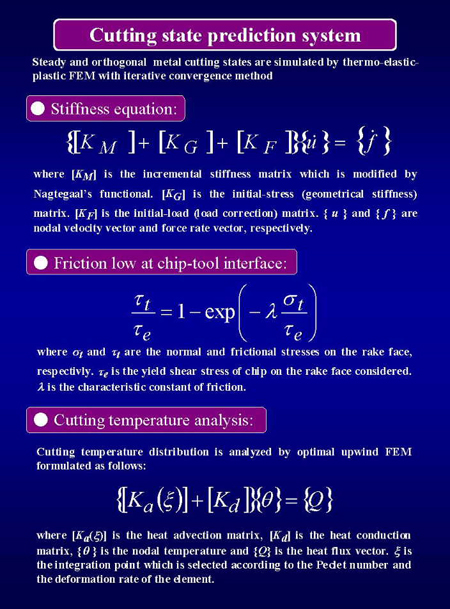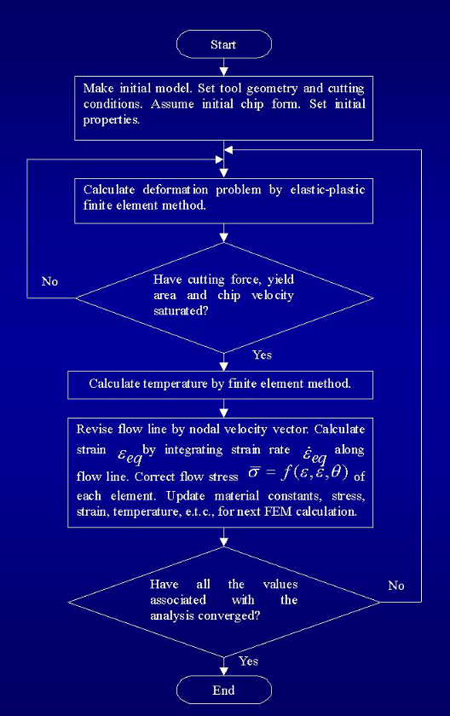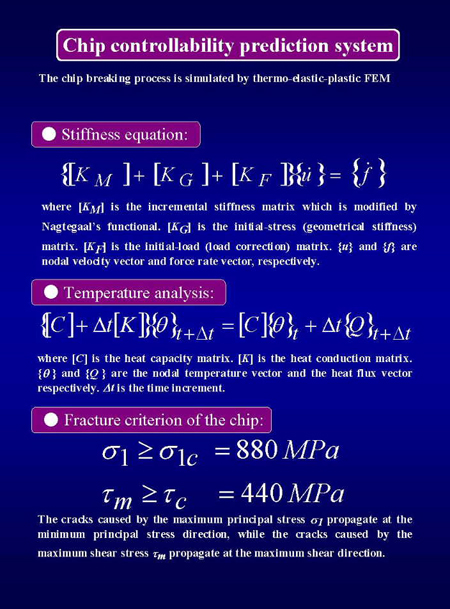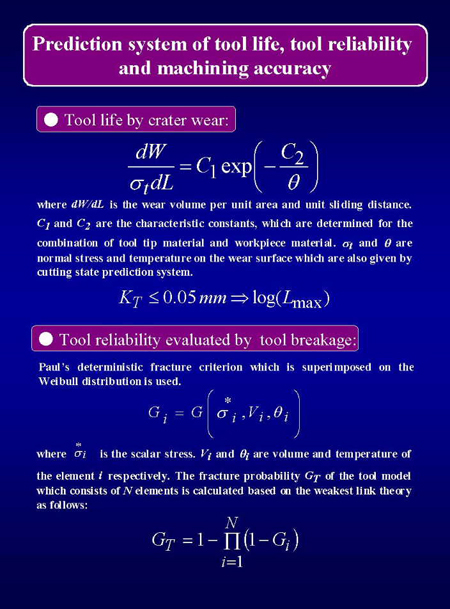How do we predict metal cutting phenomena and tool performances?
by Dr. SHINOZUKA Jun 1991-1998

How do we predict metal cutting phenomena and tool performances?
by Dr. SHINOZUKA Jun 1991-1998

 Japanese
Japanese
|
All Rights Reserved by Dr. SHINOZUKA Jun.
|
Prediction of Cutting Mechanism
 Step.1
Step.1
In order to predicte "metal cutting phenomena" in more detail,
the much more accurate material properties
such as the flow stress or temperature
must be required.
Because the cutting forces strongly depends on the flow stress,
and the flow stress strongly depends on the temperature,
strain, strain rate and its history.
and more over the cutting forces strongly depends on the
chip shape.
 The accurate flow stress is obtained by Hopkinson's bar type
experiment.
The accurate flow stress is obtained by Hopkinson's bar type
experiment.
 Step.2
Step.2
Calculate the cutting mechanics by thermo-elastic-plastic FEM with
iterative convergence method.
This is a steady state simulation.
From this, the cutting forces, cutting temperature, chip shape, and so on
are obtained.
 Step.3
Step.3
Calculate the chip breaking process by thermo-elastic-plastic FEM
using the chip shape and the distributions of the cutting temperature,
flow stress and material hardning of the chip which are obtained
by Step 2.
This is unsteady state simulation.
From this, the chip break or not and the broken chip shape
if ths chip break are obtained.
And more over, the change of cutting forces durling chip breaking
process is obtained too.
 Step.4
Step.4
Calculate the tool wear rate, the fracture probability and the
deformation of the tool by cutting forces or cutting temperature.
 Step.5
Step.5
Estimate the tool performance considering every thing above all,
cutting forces, chip breakability, tool wear, tool fracture reliability,
machining accuracy and the quality of the machined products.

Iterative Convergence Method to predict steady state cutting process

In this simulation the orthogonal and steady state metal cutting is considered.
In order to predict the metal cutting mechnisam, the iterative convergence methods is used together. This metods is that the FEM model and meterial conditions such as the flow stress, temperature, material hardning, etc, are modified step by step until the change in all of them vanish.
In short, FEM simulation is done using the initial FE model which is build by the adequate chip shape. For initial model, stresses are set to zero and temperature is set to room temperature. The FEM calculation is done until the cutting forces are saturated. In general, there are some disagreement between the nodal velocity vector, the flow line, and the chip shape. So, the FE model are modified corresponding to the nodal velocity vector calculated. And the material conditions are updated. In short, the situation of the deformation, which depends on strain, strain rate and temperature, is integrated according to the flow line. In this process, this simualtion can consider the cutting process.
After 10 to 20 times iterations, the final convergence results may be obtained.
Method for prediction of chip breaking process

Prediction of tool wear and tool breakage
